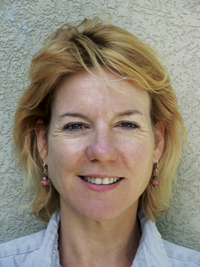You've got seeds—maybe they're already sprouting indoors—and now there's just the interminable wait for the new plants, ordered in the thick of wintertime, to arrive.
Only now you realize there's no room in the established gardens, or the colors may be wrong and a new plot is called for. Around this time of year my savvy neighbors start eyeing me and finally ask, "What's the new plot for?"
The first thing to do is really take a good look at your land. Is there a sunny place that could be turned into a vegetable garden? Perhaps a shady spot might be enhanced with hostas and foxgloves. Is the front of the house needing some color, drama or form?
Whichever direction you go, the first thing to do is have a soil test done to make the proper adjustments for the plants you are growing. The University of Idaho Cooperative Extension office at 117 N. River St. in Hailey is where to take a sample for testing. Their phone number is 788-5585. They can tell you what additives your soil needs. In our area, nitrogen is usually a necessary additive but don't take my word for it. Get the stuff tested.
The next aspect is establishing the plot's boundaries and killing off the unwanted vegetation, such as grass and weeds. Killing surface vegetation is tricky. Dumping chemicals on an area to kill off grass is not an answer. That approach is somewhat akin to performing chemotherapy on a person with cancer. It kills everything, even things you'd rather hang on to, like hair.
So, go for a surface approach when working in a new area. You can double dig the first year to break up hard soil but refrain from digging every year, as it disturbs too much of the life within the soil. If time permits, you can smother grass and weeds with old carpeting or black plastic anchored to the ground. For best results, leave the covering in place for several weeks of warm weather. A newspaper, cardboard and straw mulch will also kill the grass within a few weeks. The stuff begins to decompose, creating extra organic matter that is beneficial.
In some cases, such as when building a raised bed plot, the plastic or carpet may be left where they lay, with holes poked through, and compost and new soil placed on top. Avoid getting landfill type soil, as it's full of junk from stones and gravel to some child's old plastic toys. Instead, find clean topsoil.
If your soil is sandy, you'll want to add compost and/or composted manure, as well as some peat moss or humus to enrich the soil. This is especially important if you are growing vegetables.
For a clay soil, which is somewhat common here, add organic compost, kelp meal, gypsum or lime and bone meal. The less you feed your soil and lawn with chemical compounds the more active your soil will remain.
Organic soils, plants and lawn also attract more birds, worms and other healthy organisms to the area, thus creating a necessary cycle of life.
When the soil is ready—and it may take awhile and some adjustments—choose wisely. Make sure the plants you are planting are the right ones for the new plot. Watch the sun, wind and water levels. And feed the soil.


 Dana Dugan
Dana Dugan



































